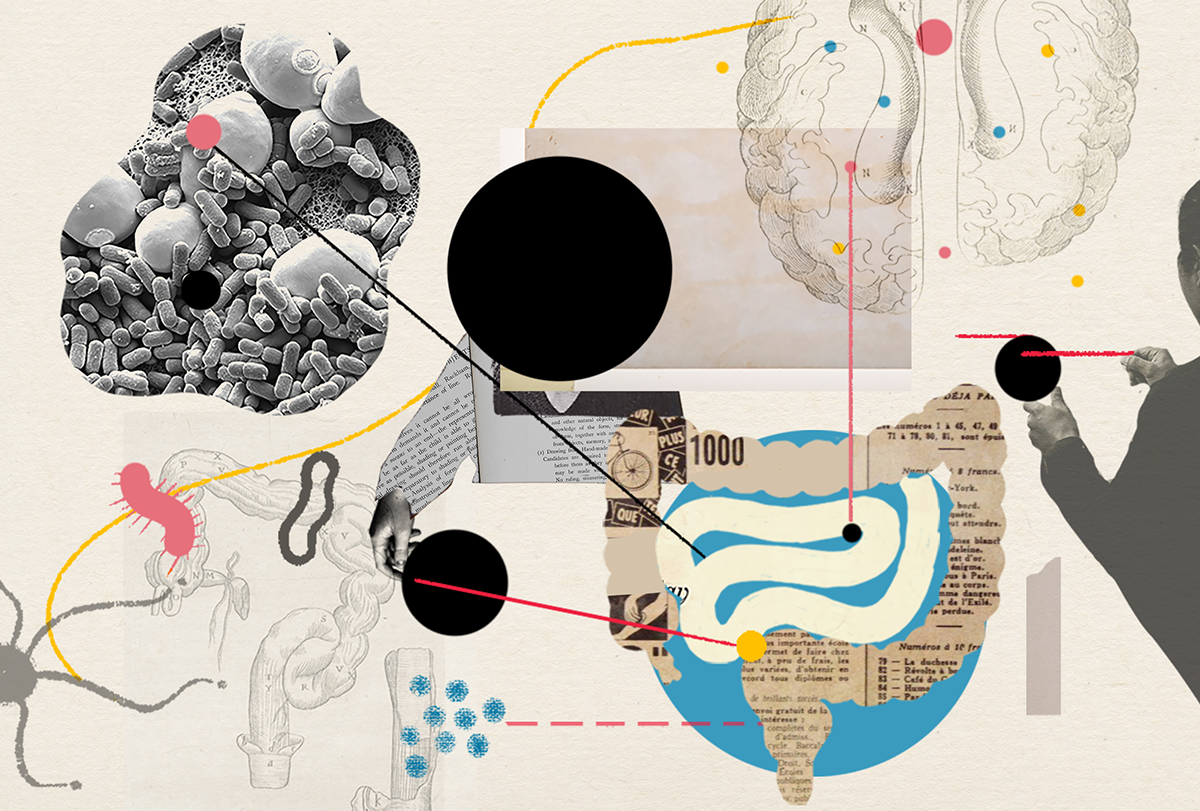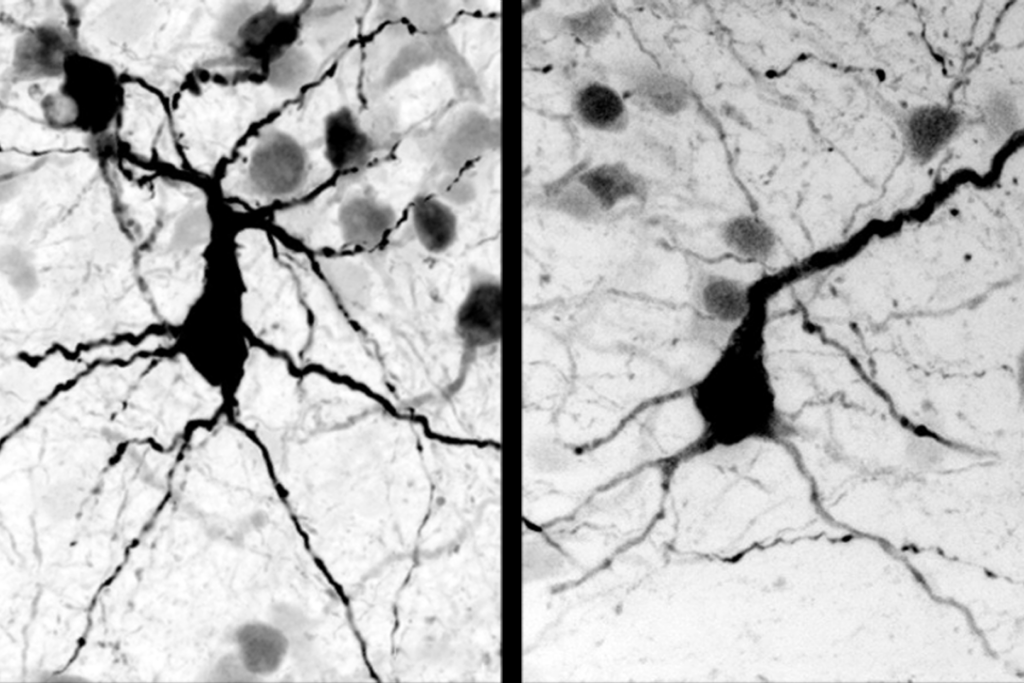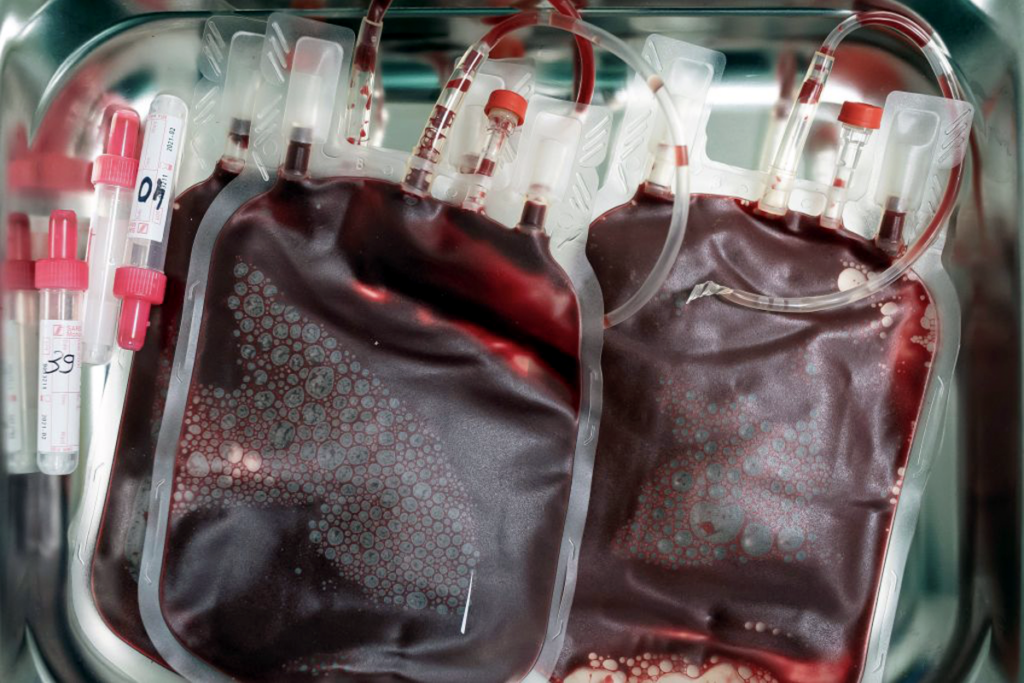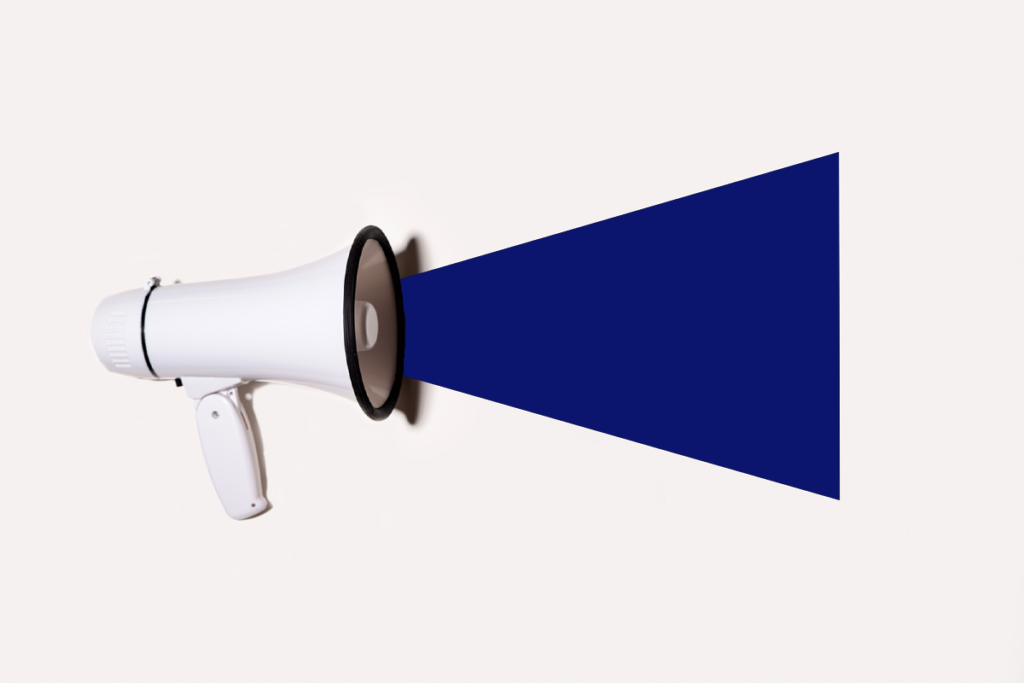The purported autism-microbiome connection is having a moment. It’s the focus of a new $50-million call for proposals from Wellcome Leap—a research initiative of the Wellcome Trust—and a 2024 Netflix documentary portrays fecal microbiota transplants as a promising treatment for autism-related traits.
“It seems to have captured the public’s imagination,” says Kevin Mitchell, associate professor of genetics and neuroscience at Trinity College in Dublin. But Mitchell says he has long been skeptical.
Eventually, he and some colleagues “collectively got exasperated enough by this that we felt that we had to say something about it,” Mitchell says. Today, they published a comprehensive review in Neuron of more than 30 studies on the autism-microbiome connection, including preclinical experiments in mice, human observational studies and clinical trials.
After accounting for statistical, technical and conceptual flaws, the team reached a clear conclusion: “There’s nothing there,” Mitchell says.
Research projects that include the keywords “autism” and “microbiome” have netted about $20 million to $25 million in U.S. federal funding annually since 2018, Mitchell’s team found using the funding database NIH RePORTER. It’s worrying that funders assume “there’s a solid foundation of work,” Mitchell says. “It’s just this huge amount of scientific effort and funding going into exploring these ideas.”
Mitchell spoke with The Transmitter about the problems he sees with studies that claim to show a microbiome-autism link, and how neuroscientists can read them with an analytical eye.
This interview has been lightly edited for length and clarity.
The Transmitter: One potential problem you found with observational studies is “quasi-replication.” Can you explain this?
Kevin Mitchell: Quasi-replication means you might do a study on people with autism and find some differences in the microbiome, and I might do a study and find some differences. If you put it like that, it sounds like we replicated each other’s work, right? But actually, your results and mine could be completely contradictory.
In this research field, there’s this wording of “dysbiosis,” some overall difference, which just hides a lack of consistency between studies. When you look into the details, you see that these studies are contradicting each other. That’s not adding to support; that should be reducing your confidence that there’s anything real going on.
TT: Another potential issue you mention with the observational studies is too many degrees of freedom. Where do you see this?
KM: There is a difference between doing exploratory analyses and doing real hypothesis testing. There’s nothing wrong with saying, “I wonder if there is something different between the microbiomes of people with autism and people without.” But there’s so many degrees of freedom—it could be any bacterial species, an increase or a decrease in population, a ratio—that, depending on how you do your analysis, you can absolutely find something. The result is taken at face value, but it should be taken rather as preliminary evidence that you should then go replicate before you publish it.
TT: So why did your review emphasize the findings from observational studies of autistic people and neurotypical siblings in the same household?
KM: Epidemiological studies have all kinds of potential confounds. Siblings are the best control because they’re growing up in the same household and have a shared genetic background—everything matches up except having autism.
In the two bigger studies we looked at that use sibling controls, researchers found no microbiome differences. Another with siblings and unrelated controls only found differences with the unrelated controls.
Some of the bigger studies that use machine learning to predict autism based on the microbiome could differentiate between autistic and neurotypical people most of the time but had no predictive power with siblings. That suggests that any signal of a difference is probably driven by confounders. You can draw your own conclusions about why these results haven’t been more prominently publicized.
Another thing that really gets glossed over is the effect size. It’s really tiny, and it seems likely to be caused by a confound or causation in the reverse direction, such as autistic people tending to have different diets.
TT: Research in other contexts tells us something about the sample size needed to see effects on the microbiome from various conditions, correct?
KM: That was super striking for me. These studies looked at thousands of people with the variables that we know are most strongly associated with differences in microbiome, like age, body mass index, smoking, diabetes, diet and so on. It took thousands of samples to see these effects robustly and reliably.
That means that not only shouldn’t we trust results from studies with 10 or 20 people, we should ignore them. They’re just noise.
TT: What are some of your concerns with modeling the gut-autism connection in mice?
KM: People usually take germ-free mice raised in sterile conditions, with no gut bacteria, and then populate the gut. They test whether something in the fecal microbiome of humans with autism is causing the autism by putting that microbiome into mice and seeing if they have autism-like symptoms.
But another experiment found these germ-free mice tend to show autism-like behavioral differences to begin with. That study then treated them with a probiotic to see if they could rescue those differences. So even within the field, there’s this real lack of clarity about what these germ-free mice are models of.
That’s a conceptual issue, but there are technical ones. Mice and humans have very different guts anatomically—85 percent of the gut bacteria genera in humans are not found in mice. So when you try to populate the mouse gut with human species, most don’t engraft. That makes you feel a little uncomfortable about the chain of causal influences in that scenario.
In a couple of cases, the ways studies tried to induce autism traits, such as via maternal immune activation or a high-fat maternal diet, are not supported by evidence. So there’s no construct validity.
A deeper problem is that the idea of “autistic-like” behavior in a mouse has no proven validity to begin with.
TT: What about clinical trials?
KM: There are three trials using fecal microbiome transplants into human patients with autism and then claiming significant improvement of autism symptoms over time. They get tremendous publicity, and one has been cited thousands of times.
First, they’re very small—18 to 20 autistic participants in this widely cited study, and 40 and 49 in the other two studies. And they’re open-label, single-arm studies, which means there’s no placebo control. And over the time frame of one of the studies, which was a follow-up, there was no control for the fact than in two years many kids just improve and mature anyways.
There’s one bigger fecal microbiome transplant study with about 50 people in each arm, which found nothing. So when you do the study properly, it doesn’t show any effect.
TT: Why do you think this idea remains compelling despite the evidence against it?
KM: There’s a psychological aspect. It’s nice to think that there’s some simple cause for this complex condition. There would be something to blame, but also something that’s amenable to treatment or modulation. That grabs people’s interest because it offers a simple narrative for what’s actually an incredibly complex etiology.
TT: What do autism researchers need to know before they cite studies on this topic? Should they be keeping their distance?
My advice would be to read these papers. People read the citations to the papers and the headline claims. They don’t go back and look at the actual evidence and study design to see if they’re robust at all. Journalists should read carefully too!
Funders should think more carefully about investing in this research. In this paper we did a deep dive, and there’s very little, if anything, to grab a hold of that would rise to the level of preliminary evidence that suggests we should do bigger studies.






